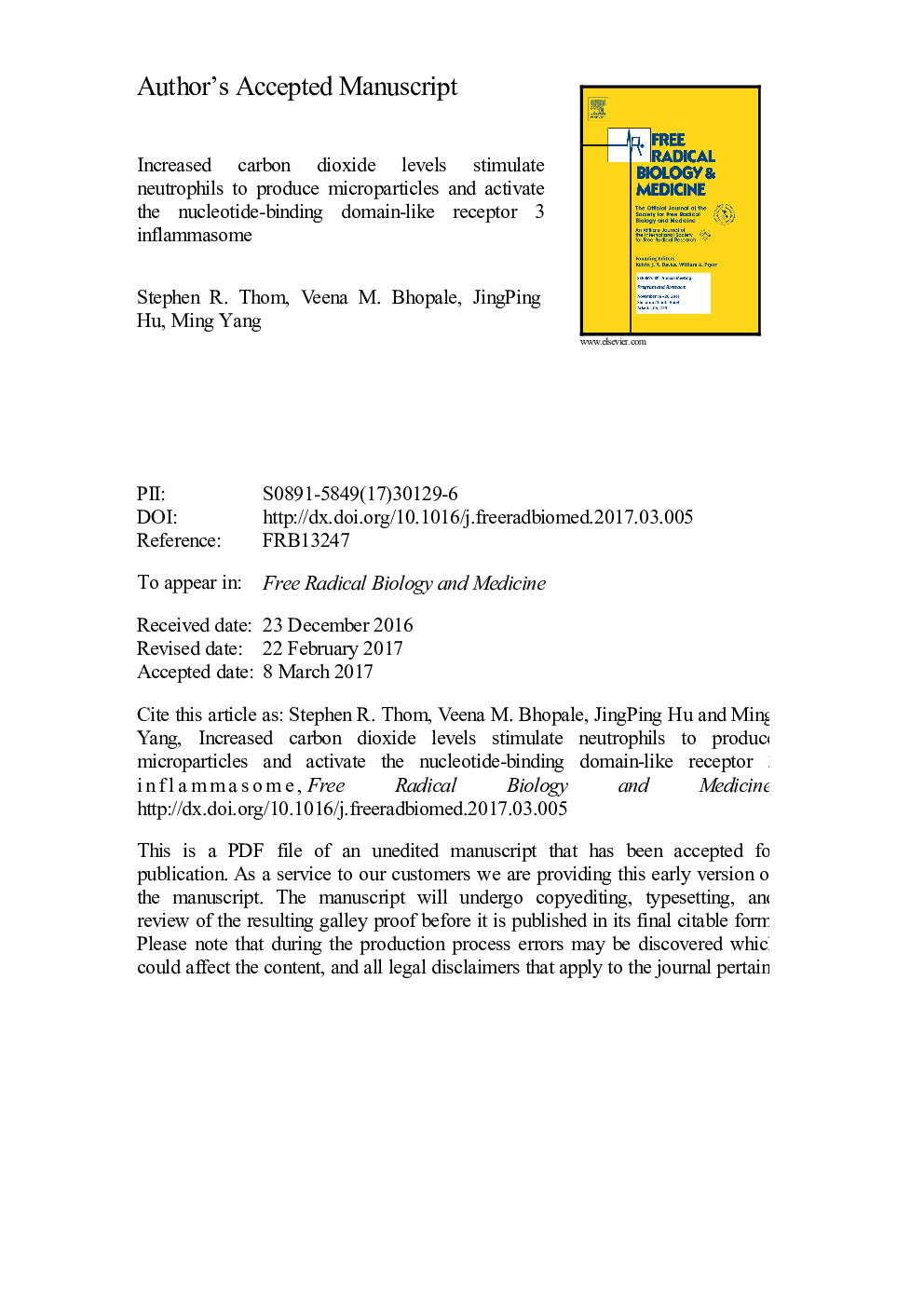| Article ID | Journal | Published Year | Pages | File Type |
|---|---|---|---|---|
| 5501797 | Free Radical Biology and Medicine | 2017 | 56 Pages |
Abstract
Hypothetical biochemical mechanism for CO2-mediated MPs production: Data suggest that the initial event triggering MPs generation by elevated concentrations of CO2 and/or H2CO3 is carboxylation reactions that enhance mitochondrial production of superoxide (O2.), H2O2 and potentially, a varied array of CO2-derived oxidants. These act on endoplasmic reticulum inositol 1,3,5-triphosphate (IP3) receptors to trigger an elevation of intracellular calcium, followed by activation of protein kinase C isoforms that increase NADPH oxidase (Nox) activity. Nox-derived O2. feeds back to cause further mitochondrial oxidant production and also reacts with nitric oxide (.NO). CO2 and/or H2CO3 are likely to interact at this step to produce agents capable of protein S-nitrosylation (SNO-) leading to formation of cytosolic SNO-actin. Actin turnover is enhanced by linkage of vasodilator stimulated phosphoprotein (VASP) to SNO-actin and accelerated polymerization hastens linkage of Rac 1/2 and focal adhesion kinase (FAK) that are depicted in the figure with dotted lines. FAK links type-2 nitric oxide synthase (iNOS) with actin, enhancing its activity and thus contributing to the auto-catalytic nature of the process. There is also linkage of floppase and flippase to cytosolic actin, which may impact enzyme activity, and which are required for the membrane phospholipid changes ultimately required for MPs formation. Additionally, Apoptosis-associated Speck protein with CARD domain (ASC) links to SNO-actin and secondary association of NLRP3, caspase 1 and calreticulin occur with production of active IL-1β.181
Keywords
VASPDCF-DAIP3TrxRIL-1βNLRP3iNOSSmall inhibitory RNAFAKTXNIPASCOAAFBEOxaloacetatePCBS-nitrosylationinositol 1PDI5-triphosphateNOxsiRNAIndoor air pollutionNLRP3 inflammasomeNADPH oxidaseInterleukin-1βthioredoxin reductaseMicroparticlesendoplasmic reticulumphosphoenolpyruvate carboxykinaseVasodilator-stimulated phosphoproteinknock-outMPsnitric oxide synthaseprotein disulfide isomeraseThioredoxin interacting proteinpyruvate carboxylasefocal adhesion kinase
Related Topics
Life Sciences
Biochemistry, Genetics and Molecular Biology
Ageing
Authors
Stephen R. Thom, Veena M. Bhopale, JingPing Hu, Ming Yang,
